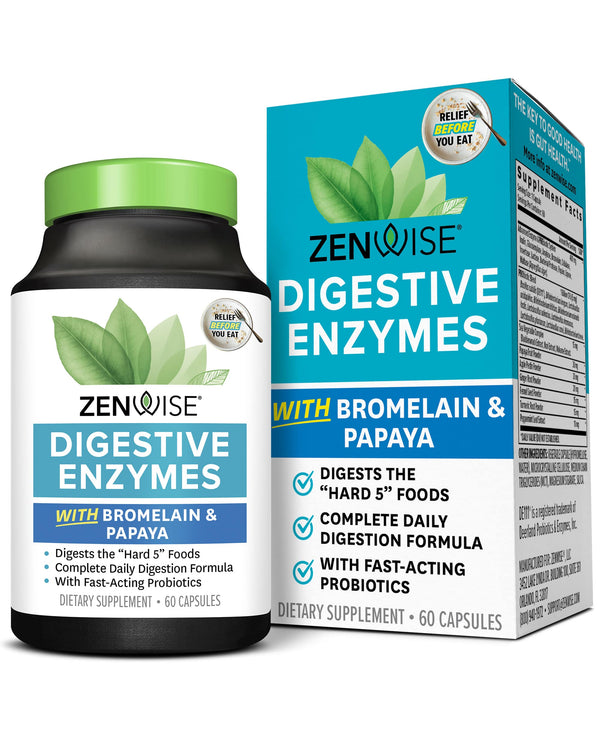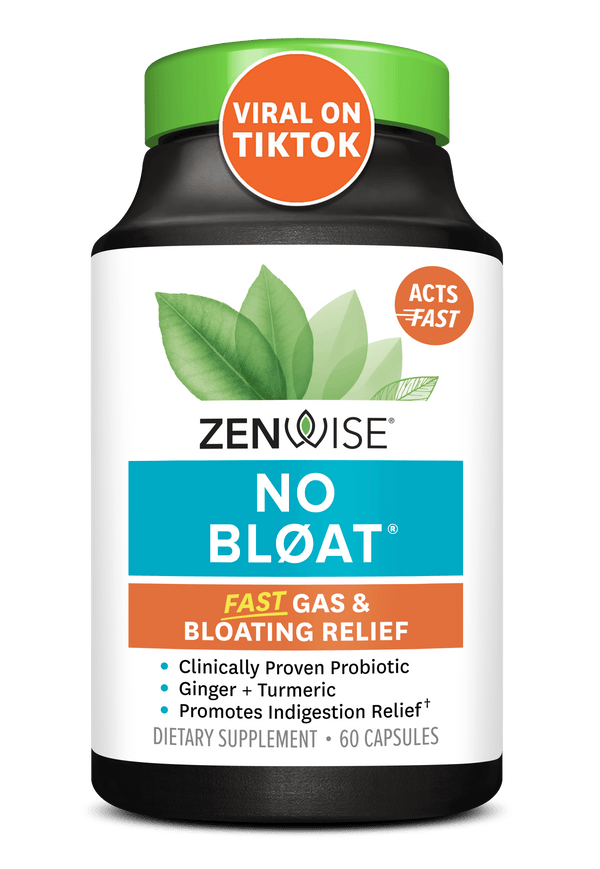
Chances are you’ve never even thought about making your own yogurt because you thought it would be too complicated, you would need special tools, or you weren’t sure the finished product would be the same as your favorite store-bought brand. We’re here to let you know that it’s a lot easier than you think, you don’t need a ton of fancy equipment, and we promise the results will be as tasty as they are packed with probiotics.
There are countless ways to make yogurt and yes, you can make nondairy yogurt at home. But we’re going to focus in on two recipes and processes that uses tools and ingredients you either already have on hand or can easily purchase.
What Exactly Is Yogurt?
Yogurt is the bacterial fermentation of dairy and non-dairy milk. The results of fermentation will always be an acid, gas, or alcohol. During the fermentation of dairy milk, the bacteria, called cultures, ferment the lactose. This process produces lactic acid, causing the milk proteins to curdle and separate from the whey (yes, the same stuff you scoop into your smoothies). That lactic acid is what produces the tanginess that makes yogurt so tasty. While there are countless types and takes on yogurt that result in different levels of tanginess and texture, the most common styles of yogurt in US grocery stores are regular yogurt and Greek yogurt.
Why Should I Make My Own Yogurt?
- Save Some $$$: Simply put, making your own yogurt will save you money.
- You’re In Control: When you make your own yogurt, you are able to choose the quality of the ingredients, the process, cut the fillers and sugar, and add any flavors you like.
- Higher Probiotic Counts: Because there are so many controls in the processes of industrial food production, it is very common for homemade yogurt to contain higher levels of probiotics. And we all know that we’re big fans of anything that increases the positive benefits of the foods we love.
Some Of Yogurt’s Benefits
It packs a nutrient punch: While it ultimately varies on the type of milk you choose to use for your yogurt, in general, yogurt is a nutrient dense food that is filled with vitamins and minerals.
Dairy yogurt is high in protein.
Yogurt with live cultures will benefit your digestive health.
What Do I Need to Make Dairy Yogurt?
- Milk
- Plain yogurt (as a starter culture)
- Cheesecloth
- Thermometer
- A Pot (we’ll include info on using a slow cooker too)
- Colander or Mesh Sieve
You can use any type of dairy milk, from skim to whole, to make yogurt.
Then you’ll need to choose a plain yogurt to use as a starter culture for your first batch of yogurt. After that, you’ll be able to use yogurt from your own batch for each following batch. Some people may use a specific culture but there really is no need to purchase a ‘fancy’ yogurt culture. On that note, it is essential that the yogurt that you do use for your first batch has live cultures in it. You can figure out which yogurts have live cultures by taking some time to look at the labels. Most will likely have l. bulgaricus and s. thermophilus cultures.
Cheesecloth and a kitchen thermometer are probably the craziest kitchen tools you’ll need for your yogurt. We recommend looking for a decent quality cheesecloth for straining your yogurt so you can use it multiple times. A kitchen thermometer will help you ensure that you heat the milk to the right temperature and cool to the right temperature, which will lead to a better end result.
The colander will be used, along with your cheesecloth, to strain your yogurt.
What Do I Need to Make Non-Dairy Yogurt?
- Cashews
- Probiotic Capsules
- Cheesecloth
- Colander or Mesh Sieve
- A Blender
There are plenty of recipes for almond, coconut, oat and you name it non-dairy yogurt. We choose to utilize cashews because they seem to be the easiest to approach and successfully execute without a long ingredient list.
With non-dairy yogurts most people choose to utilize starters or probiotic capsules for their homemade yogurt. This not only allows you to control what strains are active in your non-dairy yogurt, but it might also be because many store-bought non-dairy yogurts are very processed, have long ingredient lists, or do not contain active cultures. Making them less than ideal to utilize when you’re making your own non-dairy yogurt.
Cheesecloth and a colander/mesh sieve will be used to strain your yogurt (if you prefer a thicker non-dairy yogurt). We recommend looking for a decent quality cheesecloth for straining your yogurt so you can use it multiple times.
How Long Does Homemade Yogurt Last?
Homemade yogurt is very much alive, and its flavor and texture will continue to evolve with time. The longest we recommend keeping homemade yogurt in the fridge is two weeks tops. If you know you will not be able to work through an entire batch of yogurt before the two-week mark, you can freeze yogurt for about a month. You can even freeze a portion of your yogurt to use as a starter if you are heading out of town and don’t want to start all over again.
Pros & Cons Of Using A Slow Cooker To Make Yogurt
Using a slow cooker will decrease the chances of burning your milk because the heating process will be slow and easy. You can also set it up and step away as the milk heats up over a few hours. On the other hand, a slow cooker’s process is exactly that, slow.
Pros & Cons Of Using A Stove to Make Yogurt
Simply put, using your stove top to heat your milk is faster. However, unlike using a slow cooker, the stove does require your near constant attention to make sure you don’t burn your milk.
The Milk I Have Is Pasteurized, Do I Really Need To Heat It?
If you Google how to make yogurt, any recipe you click on, including ours will say you need to heat your milk to 180 degrees F before you cool it to 110 degrees F. The short answer is yes. The long answer is that heating the milk doesn’t just kill any bad bacteria, it also dictates your yogurt’s texture. That is because the heat changes the structure of the protein, allowing it to thicken into the yogurt texture we all know and love.
How Will I Know My Yogurt is Ready?
It’s all in the texture. At the end of the day, you can decide how thick, or thin you want your yogurt to be. A good start is to make sure it is no longer runny, maybe it even has a little bit of a jiggle. And if you like a thicker yogurt, you might wait to see it start to pull away from the sides as it sets, with a little bit of whey (a clear liquid) in the space.
What About The Whey?
Milk contains two types of protein, casein, and whey. After the fermentation process, the casein will end up in your yogurt, and the whey is that yellowish liquid that you have from straining your yogurt. Whey is essentially milk, minus the fats and solids, leaving protein and lactose. The thicker you want your yogurt and the longer your strain it, the more whey your yogurt will yield.
While you may just toss it, there are plenty of things you can do with whey to not only stretch your efforts but take advantage of what a good source of protein whey can be. And if you have the freezer space, you can even freeze it for up to 6 months if you don’t have a use for it right away. Some of our favorite ways to utilize whey are:
- Add it to your morning smoothie
- Replace the water in soups, stews, and sauces
- Don’t be afraid to use whey in place of water in baking recipes, the additional protein can also help with the texture of gluten free baked goods.
- You can even use it in your garden. Plants that prefer more acidic soil will love the lower pH some whey can provide.
Dairy Yogurt
Ingredients
- 4 cups milk (we used a grass-fed whole milk)
- ¼ cup plain store-bought yogurt (ensure the container says “live” or “active” cultures)
Tools
- Pot or Slow Cooker
- Container w/ Lid For Yogurt (We used a large jar)
- Large Bowl
- Cheesecloth
- Colander or Mesh Sieve
Directions
- Heat your milk to 185 degrees F. If you are doing this on a stove, keep a close eye on your milk, stirring constantly to prevent scorching your milk. Do not skip this step! It will impact the texture of your yogurt.
- Cool milk back down to about 110 degrees F. You can do this quickly with an ice bath, but we allowed our milk to cool over time to allow the moisture in our milk to reduce. Please note that not cooling your milk enough will kill the bacteria in your yogurt when you proceed with the next step.
- Then in your clean yogurt container, add 1/2 cup of the warm milk into the yogurt to temper the yogurt and milk.
- Continue to add your milk to the yogurt milk mixture ½ cup at a time, mixing well before adding the next ½ cup.
- Cover your jar/bowl/container with its lid (don’t screw it on too tight) and place your soon-to-be yogurt somewhere warm and let sit for 4 to 8 hours as the bacteria creates some culinary magic.
- We soaked a thick towel with warm water before wringing it out and wrapping it around our jar and placing it in our oven with the oven light on (that thing gives off more heat than you think).
- If you are aiming for regular yogurt, you’re ready to dig in and enjoy!
- If you like a thicker, Greek yogurt, it’s time to strain your yogurt. Start by lining your colander/mesh sieve with your cheesecloth and placing it over a large bowl. Pour in your yogurt and place it in the fridge. Strain until your yogurt has reached your desired thickness.
- And that’s it! Transfer your Greek yogurt to an airtight container and don’t forget to give it a proper taste test.
Cashew Yogurt
Ingredients
- 4 cups cashews, soaked overnight
- 4 teaspoons apple cider vinegar
- 1-2 pinch sea salt
- 1 ½ cups water
- 6 probiotic capsules (We used our Digestive Enzymes)
Tools
- Blender
- Container w/ Lid For Yogurt (We used a large jar)
- Silicone Spoon/Spatula
- Cheesecloth
- Colander or Mesh Sieve
Directions
- Rinse your soaked cashews.
- Add the cashews, apple cider vinegar, filtered water, and the sea salt to your blender and blend until completely smooth.
- Pour the mixture into your container. Open your probiotic capsules and pour the contents into the mixture.
- Using a clean silicone spoon, stir until the probiotics are fully incorporated.
- Cover your jar/bowl/container with its lid and place your soon-to-be yogurt somewhere warm and let sit for 24 to 48 hours as the bacteria creates some culinary magic.
- We soaked a thick towel with warm water before wringing it out and wrapping it around our jar and placing it in our oven with the oven light on (that thing gives off more heat than you think).
- Just like dairy yogurt, non-dairy yogurt is a choose your own adventure on the tanginess and texture front. The longer you leave it the tangier and thicker it will be.
- If you like a thinner yogurt, all you need to do once the fermentation process is complete is to give it a good stir and move it to our fridge, or dig in.
- If you like a thicker yogurt, it’s time to strain your yogurt. Start by lining your colander/mesh sieve with your cheesecloth and placing it over a large bowl. Pour in your yogurt and place it in the fridge. Strain until your yogurt has reached your desired thickness, usually anywhere from 30mins to 2 hours.
- And that’s it! Transfer your thick cashew yogurt to an airtight container and don’t forget to give it a proper taste test.
Pro Tips
- Do not use any metal bowls, whisks, spoons etc. They are not fermentation’s friends.
- The goal temperature during the fermentation process is about 100 degrees F. For most, your oven, with the oven light turned on will be enough to maintain that temperate. Or, if you are unsure if your oven is warm enough for your yogurt you can turn the oven on for 1 minute (just enough to warm things up a little) every so often.
- Make sure your tools are as sanitized and clean as possible and store your yogurt in a clean, airtight container. The fermentation process is all about bacteria doing their thing and growing, this means that bad bacteria can also do the same thing. Using clean tools prevents that.
- As we’ve said above, you really can use any milk you would like to use, even goat’s milk. Just be aware that the more fat, the thicker and creamier your yogurt will be.
- You can sweeten and flavor your yogurt after the fermentation process has completed. We like adding a tablespoon or two of maple syrup, or coconut sugar, and scraping a vanilla bean into our yogurt.
- If you like ‘fruit on the bottom’ style yogurt, we can recommend making a simple compote of local seasonal fruits and placing a spoonful or two of your compote in the bottom of a small jar or bowl before layering your yogurt on top and storing until it’s meal/snack time.




Leave a comment
This site is protected by hCaptcha and the hCaptcha Privacy Policy and Terms of Service apply.
Please note, comments must be approved before they are published